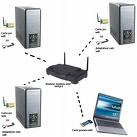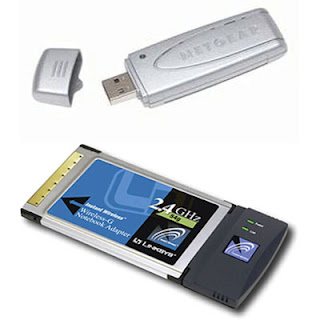
According to wikipedia: Wi-Fi was originally a brand licensed by the Wi-Fi Alliance to describe the embedded technology of wireless local area networks (WLAN) based on the IEEE 802.11 standard. As of 2007, common use of the term Wi-Fi has broadened to describe the generic wireless interface of mobile computing devices, such as laptops in LANs. The term Wi-Fi was chosen as a play on the term "Hi-Fi", and is often incorrectly mistaken to be an abbreviation for wireless fidelity. Wi-Fi and the Wi-Fi CERTIFIED logo are registered trademarks of the Wi-Fi Alliance, the trade organization that tests and certifies equipment compliance with the 802.11x standards.
If you've been in an coffee shop, restaurant, campus or hotel, mostly you've right in the middle of a wireless network. Many of us use wireless networking, also called WiFi or 802.11 networking, to connect our computers at home, and now an increasing number of cities use the technology to provide free or cheap Internet access to residents. In the near day, wireless networking may become so widespread that we can access the Internet just about anywhere at any time, without using wires, so wonderful life.
A wireless network uses radio waves, just like handphone, tv and radios do. In fact, communication across a wireless network is a lot like two-way radio communication. Here's what happens:
- A computer's wireless adapter translates data into a radio signal and transmits it using an antenna indoor or outdoor.
- A wireless router receives the signal and decodes it. It sends the information to the Internet using a physical, wired Ethernet connection.
The radios used for WiFi communication are same to the radios used for walkie-talkies, handphones and other devices. They can transmit and receive radio waves, and they can convert 1s and 0s into radio waves and convert the radio waves back into 1s and 0s. But WiFi radios have a few notable differences from other radios:
- They transmit at frequencies of 2.4 GHz or 5GHz. This frequency is considerably higher than the frequencies used for cell phones, walkie-talkies and televisions. The higher frequency allows the signal to carry more data.
- They use 802.11 networking standards, which come in several flavors:
- 802.11b was the first version to reach the marketplace. It's the slowest and least expensive standard, and it's becoming less common as faster standards become less expensive. 802.11b transmits in the 2.4 GHz frequency band of the radio spectrum. It can handle up to 11 megabits of data per second, and it uses complimentary code keying (CCK) coding.
- 802.11g standard also transmits at 2.4 GHz, but it's a lot faster than 802.11b -- it can handle up to 54 megabits of data per second. 802.11g is faster because it uses orthogonal frequency-division multiplexing (OFDM), a more efficient coding technique.
- 802.11a transmits at 5GHz and can move up to 54 megabits of data per second. It also and uses OFDM coding. Newer standards, like 802.11n, can be even faster than 802.11g. However, the 802.11n standard isn't yet final.
- WiFi radios can transmit on any of three frequency bands. Or, they can "frequency hop" rapidly between the different bands. Frequency hopping helps reduce interference and lets multiple devices use the same wireless connection simultaneously.
Any products tested and approved as "Wi-Fi Certified" (a registered trademark) by the Wi-Fi Alliance are certified as interoperable with each other, even if they are from different manufacturers. A user with a "Wi-Fi Certified" product can use any brand of access point with any other brand of client hardware that also is certified. Typically, however, any Wi-Fi product using the same radio frequency (for example, 2.4GHz for 802.11b or 11g, 5GHz for 802.11a) will work with any other, even if not "Wi-Fi Certified."

As long as they all have wireless adapters, several devices can use one router to connect to the Internet. This connection is convenient and virtually invisible, and it's fairly reliable. If the router fails or if too many people try to use high-bandwidth applications at the same time, however, users can experience interference or lose their connections.
f you want to start a wireless network in your home, office, or any public area, the first thing you'll have to do is make sure your computer has the right wireless device. Most new laptops and many new desktop computers come with built-in wireless transmitters. If your laptop doesn't, you can buy a wireless adapter that plugs into the PC card slot or USB port. Desktop computers can use USB adapters, or you can buy an adapter that plugs into the PCI slot inside the computer's case. Many of these adapters can use more than one 802.11 standard.

Once you've installed your wireless adapter and the drivers that allow it to operate, your computer should be able to automatically discover existing networks. This means that when you turn your computer on in a WiFi hotspot, the computer will inform you that the network exists and ask whether you want to connect to it. If you have an older computer, you may need to use a software program to detect and connect to a wireless network.
Connecting to internet via wifi is so convenient for us. so Wireless home networking are convenient as well. They allow us to easily connect many computers and to move them from place to place without disconnecting and reconnecting wires, and we can play computers in many position we like it.